Special Features Focus on : The Back End of a Bus
Contributed by your webmaster, May 2003
Although it might be anathema to the politically correct Thought Police, there can be little doubt that children are occasionally capable of uncommon cruelty. You just have to listen to some of the things they say to each other. One playground remark that I remember overhearing on several occasions during my own schooldays was that somebody or other "had a face like the back end of a bus!" The implication was clear : the person being discussed was aesthetically challenged, a veritable Plug among the more physically blessed ranks of Bash Street Kids.
How I used to hate that pernicious little phrase! Not, let us be clear, out of compassion for the hapless victims of the barb. No, my outrage was provoked by the unwarranted and arbitrary slur on my beloved buses! Consider the injustice of it. With a whole universe of grotty images to choose from, the thing selected as the epitome of ugliness was ... the rear aspect of a bus. Is this even remotely justifiable? Surely, as they say, there has been some mistake?
As if to right a wrong that has tormented a corner of my troubled brain all these years, this feature unashamedly celebrates that most maligned of things - the Back End of a Bus. Or, more precisely, the back ends of several Central SMT buses. Welcome to the Rear Fest!
Bristol Backs
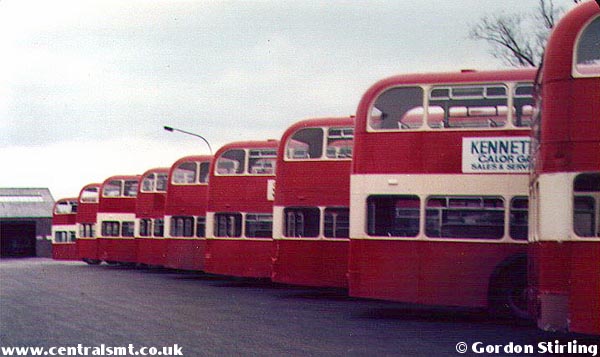 | LEFT : Bothwell Road, 1980. Spot the odd one out! |
 | This view shows my least favourite style of Lodekka back end - the narrow 'church' windows with open platform. |  | Seen at Wishaw Depot, B46 also has the early style of back-end treatment, this time seen from a nearside perspective. | 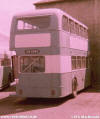 | Showing what many regard as the standard LD back-end design, B89 is seen in the yard of Bingorama, Bellshill, to whom it passed following its days at Central. |
 | B110, parked between runs at Lanark, shows the rear styling on the LDs with platform doors. | 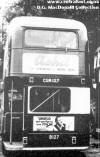 | Central's last LDs had the classic back end of open platform and single lower deck window. B127 is seen at Airbles Depot. |  | In this March 1980 view at Bingorama, Bellshill, the rear styling of the Bristol FS contrasts with that of a later FLF. Both designs incorporate an emergency exit. |
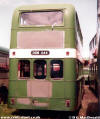 | B144 passed to Eastern Scottish in 1977 and is seen here in withdrawn condition, in the yard of Muir, Kirkcaldy, in 1981. Note the round-topped Central SMT seats - not at all the usual Eastern Scottish style - and the between-decks indicator repeaters. |  | This rear view of B160 in Motherwell makes it obvious that the bus is an FSF - count the windows! |  | The same comment applies to B170, seen here in Wishaw Depot. |
 | BE222 is sporting a wrap-around advert in this view at Knowetop, Motherwell. |  | Three BL class Lodekkas are parked up at the depot. Note the ubiquitous Askit 'miseries'! |  | This view of BL339, at Balloch in October 1974, clearly shows the substantial rear overhang on Central's BL class of extra-long Lodekka FLFs. |
_small.jpg) | Magnificently preserved BL346 was looking its best - including when seen from the back! - at the first Open Day of the Glasgow Bus Museum in 2001. |  | An unidentified BL departs Buchanan Bus Station in the company of a Midland Scottish Leopard / Y-type. |  | The Lodekka Age was over - or so we thought! BN373 illustrates the new look for the back of a Central SMT Bristol. The similarities with the FLF are obvious. |
Random Rears
 | The exception that proves those schoolkids may have had a point? I cannot better the photographer's original caption : "Surrounded by real buses, FS1 - the ugly duckling of Central SMT." | _small.jpg) | No feature on bus rear ends would be complete without the so-called mega-rear! Spectacular it may be, but along with the side advert, it absolutely ruins the stunning Redline livery applied to Central's Olympians. |  | This rear view of N1 was captured in Motherwell, complete with characteristic National Mk I puff of smoke. |
 | This shot of N5 again shows the short-lived, mainly red initial National livery - this time in colour. | 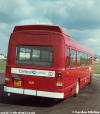 | Another non-standard National livery is seen from a rear perspective in this superb shot. |  | The rear-end of T6 shows classic Alexander styling of its day. |
Putting the boot in

 As well as illustrating the sharp contrast with the much squarer lines of the Leyland National, the picture on the left clearly shows the classic Central SMT Y-type back end. As Central's Y-types were intended purely for normal service work, no boot was normally specified. This rule was not universally adhered to, however. Clearly imports from other SBG subsidiaries would be to the normal specification of their original owners, but several native examples also featured boots, for no obvious reason. The photo on the right shows a rather scruffy T272, with fleetnumber barely visible and Midland Scottish blue showing through the red paint. The presence of a boot is one of several differences of detail compared to a standard Central purchase of similar vintage.
As well as illustrating the sharp contrast with the much squarer lines of the Leyland National, the picture on the left clearly shows the classic Central SMT Y-type back end. As Central's Y-types were intended purely for normal service work, no boot was normally specified. This rule was not universally adhered to, however. Clearly imports from other SBG subsidiaries would be to the normal specification of their original owners, but several native examples also featured boots, for no obvious reason. The photo on the right shows a rather scruffy T272, with fleetnumber barely visible and Midland Scottish blue showing through the red paint. The presence of a boot is one of several differences of detail compared to a standard Central purchase of similar vintage.
Incidentally, it may be one of the most graceful designs ever, but it is still possible to ruin the back end of a Y-type. Need proof?
(One of a kind) x 2
A pair of unique rear ends :-
_small.jpg) | BN331, heading at speed towards Shotts in 1969, shows the unique rear end styling used to accommodate its longitudinally mounted engine. | _small.jpg) | As it pauses to pick up passengers at Hamilton Bus Station on a route 60 working, D1's unique back end styling is captured by the camera. | | |
Tailpiece
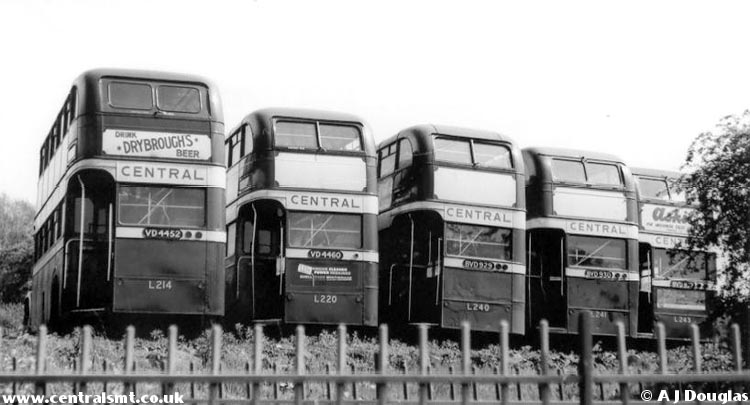


 As well as illustrating the sharp contrast with the much squarer lines of the Leyland National, the picture on the left clearly shows the classic Central SMT Y-type back end. As Central's Y-types were intended purely for normal service work, no boot was normally specified. This rule was not universally adhered to, however. Clearly imports from other SBG subsidiaries would be to the normal specification of their original owners, but several native examples also featured boots, for no obvious reason. The photo on the right shows a rather scruffy T272, with fleetnumber barely visible and Midland Scottish blue showing through the red paint. The presence of a boot is one of several differences of detail compared to a standard Central purchase of similar vintage.
As well as illustrating the sharp contrast with the much squarer lines of the Leyland National, the picture on the left clearly shows the classic Central SMT Y-type back end. As Central's Y-types were intended purely for normal service work, no boot was normally specified. This rule was not universally adhered to, however. Clearly imports from other SBG subsidiaries would be to the normal specification of their original owners, but several native examples also featured boots, for no obvious reason. The photo on the right shows a rather scruffy T272, with fleetnumber barely visible and Midland Scottish blue showing through the red paint. The presence of a boot is one of several differences of detail compared to a standard Central purchase of similar vintage.












_small.jpg)



_small.jpg)




_small.jpg)
_small.jpg)